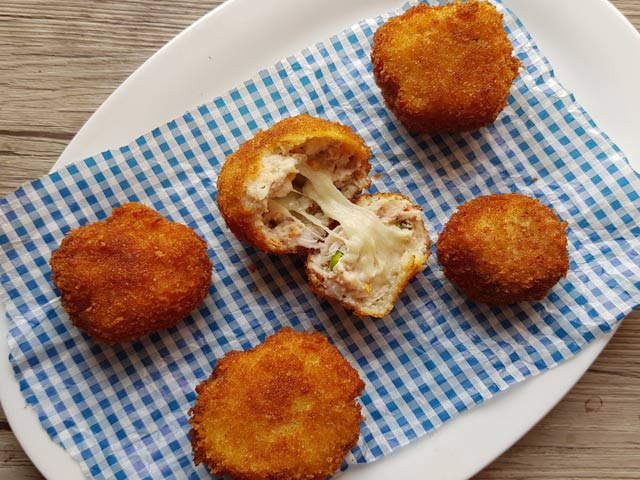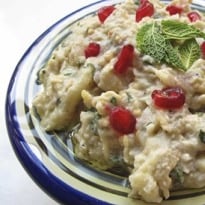Is this delicious smoky dip the ultimate aubergine recipe - and which side of the great tahini divide are you on?
Everyone has their gastronomic tics - those dishes, or ingredients, or techniques, that suddenly make everything else on the menu look like ugly sisters. The word "smoky" generally does it for me, although I'm a sucker for a nice juicy aubergine as well, so if baba ganoush is available, you can keep your boring old hummus - my pitta is only going in one direction.
Like the ubiquitous hummus, this is a dish of indeterminate origins: Levantine is probably as specific as you can fairly get, because it pops up, under a variety of names, from Turkey to Egypt as a dip, a salad, or a vegetable side. It might be loose and smooth enough to scoop with bread, or so chunky you need a fork to tackle it - but never less, as Anissa Helou observes, than "exceptionally good". And, with aubergine season drawing to a close, this is the time to tackle it.
Where there's smoke ...
Smokiness is what defines this dish, setting it apart from your common or garden baked aubergine. Ideally, I've found, this is best achieved over a hot barbecue, but unless the weather's picked up dramatically in the last few days, you'll be relieved to know other options are available.
Helou, writing in Modern Mezze, suggests pricking and grilling them, an option also given by Claudia Roden and Rebecca Seal in her book Istanbul. The latter two also, however, give the option of charring them directly over a gas flame, as in Yotam Ottolenghi's recipe. I find this, though much fiddlier and messier, gives a far better result: the grilled aubergines seem shrunken and almost desiccated, while the others are fairly bursting from their burnt skins.
David Lebovitz hedges his bets, charring them over a flame and then baking them in the oven until soft, but I'm not sure I see the point, as long as you bear in mind the advice given to Seal by Gençay Üçok of Istanbul's Meze by Lemon Tree restaurant: "If you think the aubergines are done, they're not done." They need to be not just charred, but collapsing in on themselves, and decidedly soft all the way through.
Draining and chopping
Once you've made a complete mess of your hob charring the skins, they need to come off - Ucok seems to think that some people rinse the aubergines in water to get rid of them, which he strenuously warns against, but none of the recipes I find dare suggest such heresy.
Scooping the flesh out of the papery skins is easy enough: Seal says that some Turkish cooks also reject any flesh that is even slightly discoloured, but, like her, I enjoy the "intense smoky flavour" these bits supply, so I won't be wasting any.
Even after all that cooking, aubergines are watery little things, and if you're not to stray into blandly soggy territory, you need to squeeze as much liquid out of them as possible. This is generally done with patience and gravity, but Seal and Roden both suggest squeezing the flesh out in a sieve, rather than letting it drain for Ottolenghi's "hour at least, preferably longer", and I must say that, if done diligently, the results seem just as good.
Ottolenghi may be averse to squeezing because he leaves his aubergine in "long thin strips" rather than mashing it gently, as Seal, Helou and Roden recommend. This makes it more of a salad than the dip I'm after - a bit of texture is welcome (Lebovitz whizzes his up in a food processor to give a smooth puree that reminds me more of hummus than anything else), but I also like baba ganoush to have a bit of creaminess about it.
Garlic
Happily, as it's another ingredient I carry a candle for, garlic is number two in the basic trinity of baba ganoush. Quantities vary, with Helou going for a modest single clove to six aubergines, while Roden uses a clove per aubergine. I like a hefty whack of the stuff, so I'm copying her, but if you're shy, by all means add it to taste.
Lemon juice
The final element of every baba ganoush, mutabal or patlican ezmesi is lemon juice - and again, quantities vary. Helou is once more parsimonious, as is Ottolenghi, while Roden merrily squeezes in as many lemons as she uses aubergines. I'm not going to go quite so far: too much citrussy sourness spoils the smoky richness of the aubergine, but the dish should have a certain zing nevertheless.
Tahini and other additions
The great rift in matters baba ganoush seems to be over adding tahini: Seal and Ottolenghi leave it out, and Lebovitz adds a very generous 130g ladleful, which may help to explain why his silky smooth baba ganoush tastes so much like hummus. The dish is pretty good without it, but I love the way the sweet nuttiness works with the creaminess of the slow-cooked aubergine, so I've added just a little - not enough to overpower the other ingredients, but certainly enough to make its very Levantine presence felt. Roden also, unusually, adds Greek yoghurt to her recipe. It is lovely, but I feel it robs the dish of its lemony, garlicky punch, so I'll be leaving it out.
Herbs and spices
Lebovitz adds chilli powder, "and sometimes a pinch of ground cumin" to his dip; both ingredients that work well with aubergine and tahini, but neither absolutely necessary for the proper enjoyment of the dish.
Ottolenghi adds 75ml olive oil to his, which makes sense as he's not using tahini, but as I am, I prefer to do as Helou suggests and ring the dish with oil instead in the traditional fashion, so each dipped pitta gets a little of both. Helou and Ottolenghi also suggest garnishing the dish with pomegranate seeds, which look pretty if you have them, but are less vital than the chopped herbs that most people suggest as a topping.
Parsley and mint are the most usual choices; Ottolenghi uses both, and Helou suggests either/or, while everyone else plumps for one or the other, except Lebovitz, who goes for parsley or coriander. I'm not sure about the latter's soapy flavour here: the peppery sharpness of parsley seems more fitting, but best of all, in my opinion, is sweet mint, which pairs very nicely with the aubergine.
Lebovitz and Seal stir some of the herbs into the dish itself, which I like - it guarantees a burst of freshness in every mouthful, and stops the greedy stealing the garnish. After all, this is a dish that's all about sharing.
The perfect baba ganoush
2 large aubergines (about 650g)
Juice of 1 lemon, plus a little extra
2 tbsp tahini
2 garlic cloves, crushed
3 tbsp chopped mint or flat-leaf parsley
1 tbsp pomegranate seeds (optional)
2 tbsp extra virgin olive oil
Blacken the aubergines over a gas hob or barbecue, turning regularly with tongs, until completely charred and collapsed (you may wish to surround the rings with foil, as it can be messy). Allow to cool.
Slit the aubergines lengthways and scoop out the flesh in long strands, discarding the skins. Put in a sieve and leave to drain for 30 minutes, or squeeze out if you're in a hurry. Season.
In a serving bowl, stir the lemon juice into the tahini until it loosens up. Add the garlic and two-thirds of the chopped herbs, and season again to taste. Add a squeeze more lemon juice if necessary.
Mash the aubergines gently with a fork, and then stir into the tahini mixture. Top with the remaining herbs and the pomegranate seeds, if using. Pour a moat of oil around the edge and serve.
Baba ganoush, mutabal, patlican ezmesi - what other variations of smoky aubergine dip have you come across on your travels, and which other dishes benefit from a little bit of burning? (I'd particularly love a good recipe for the pepper and walnut dip muhummara, if anyone has one?)
Felicity Cloake's perfect baba ganoush. Photographs: Felicity Cloake for the Guardian









